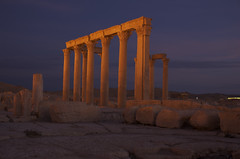Scientists are often considered to be less materialistic than average, and that's probably true. Given the poor pay relative to their qualifications, they couldn't possibly find satisfaction otherwise. If scientists chased after the latest trends out on the high street or coveted penthouse apartments in fashionable neighborhoods, they would set themselves up for disappointment.
It seems, though, that most scientists couldn't care less. It starts with fashion, which is all but absent from a laboratory environment where decade-old freebie t-shirts and faded trousers rule, and ends with transportation. Banged-up beaters and tired bicycles are better rides to work than the latest convertible, and they're ridden proudly and with conviction. For most it's a happy marriage between convenience and necessity.
As such science is an odd place is this world. A paper in Evolution and Human Behavior (certainly not among my daily reads, but The Economist ran a story on it), currently in the final stages of being published, makes the case that outward displays of status carry tangible benefits. The experiments all boiled down to having subjects wear certain clothes and scoring volunteers' or the general public's reaction to them.
There were three kinds of clothes: Plain, unlabeled clothes as a negative control; clothes conspicuously displaying a label that doesn't carry much weight in the battle royal of sartorial uptightness, Slazenger in that case; and obvious designer clothes, Lacoste or Hilfiger, which are considered highly desirable. That's what the authors claim, anyway. I wouldn't know; I'm a scientist.
Except I do have opinion, a highly favorable opinion, as it happens, of the firm Lacoste. I admire them for their skillful playing of the game. They're in a way the Apple of apparel, making products that are defined more than anything by their instantly recognizable logo. But Lacoste pushes marketing even further than Apple. There isn't much of a product to support the logo. In the most extreme case, a white t-shirt from a discount mill is turned from a penny item to a £40 fashion statement solely by the sketchy application of an embroidered alligator. The wealth creation is phenomenal. It's a brilliant corporate strategy – as long as people buy into it.
It turns out, and that is what the paper mentioned above shows, that people have good reason to buy into it. The paper's abstract summarizes the findings: "The present data suggest that luxury consumption can be a profitable social strategy because conspicuous displays of luxury qualify as a costly signaling trait that elicits status-dependent favorable treatment in human social interactions." In other words, there are tangible benefits in showing that one spends freely, at least on fashion.
In one of the experiments, the same research assistant would go collect donations for a charity on consecutive evenings, dressed differently each time. The takings were substantially higher when the person was wearing a Lacoste shirt. In another experiment, when two groups of volunteers rated mock job interviews of the same person, they judged the candidate much higher when he was wearing a belogoed shirt, and considered him deserving of a higher salary.
That's something to keep in mind for the next job interview but needs to be taken with a grain of salt. Volunteers can be forgiven for being blinded by a reptile. HR professionals are expected to cut deeper. In any case, it's questionable that this strategy would pay off in a scientific setting where people interviewing in suits attract doubtful glances.
However, scientists have their own status symbols, nearly as arbitrary is fashion labels. As I've described in an earlier post, where one's research is published matters at least as much as what that research is. The journals effectively act as logos sticking on published papers. If your work has the approval of a prestigious journal, it is considered of high quality and will help you greatly on the way to an academic position or to have a grant application reviewed favorably.
To give Lacoste full credit, the probably pick a cloth supplier of better than rock-bottom quality, to sustain the illusion that the logo justifies the price. This doesn't end the analogy to scientific publishing. Next to a considerable amount of bogus papers, the biggest splashes and the most stunning breakthroughs tend to carry the imprimatur of the most prestigious journals. In either case, it is advisable to study the underlying quality.

No comments:
Post a Comment